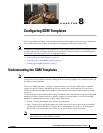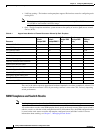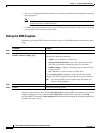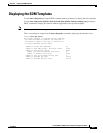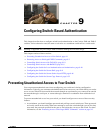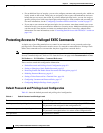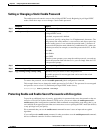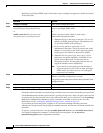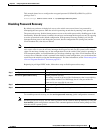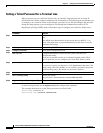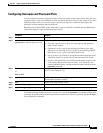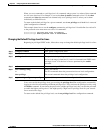
9-2
Catalyst 2960 and 2960-S Switch Software Configuration Guide
OL-8603-09
Chapter 9 Configuring Switch-Based Authentication
Protecting Access to Privileged EXEC Commands
• For an additional layer of security, you can also configure username and password pairs, which are
locally stored on the switch. These pairs are assigned to lines or ports and authenticate each user
before that user can access the switch. If you have defined privilege levels, you can also assign a
specific privilege level (with associated rights and privileges) to each username and password pair.
For more information, see the “Configuring Username and Password Pairs” section on page 9-7.
• If you want to use username and password pairs, but you want to store them centrally on a server
instead of locally, you can store them in a database on a security server. Multiple networking devices
can then use the same database to obtain user authentication (and, if necessary, authorization)
information. For more information, see the “Controlling Switch Access with TACACS+” section on
page 9-10.
Protecting Access to Privileged EXEC Commands
A simple way of providing terminal access control in your network is to use passwords and assign
privilege levels. Password protection restricts access to a network or network device. Privilege levels
define what commands users can enter after they have logged into a network device.
Note For complete syntax and usage information for the commands used in this section, see the Cisco IOS
Security Command Reference, Release 12.2 from the Cisco.com page under Documentation > Cisco
IOS Software > 12.2 Mainline > Command References.
These sections contain this configuration information:
• Default Password and Privilege Level Configuration, page 9-2
• Setting or Changing a Static Enable Password, page 9-3
• Protecting Enable and Enable Secret Passwords with Encryption, page 9-3
• Disabling Password Recovery, page 9-5
• Setting a Telnet Password for a Terminal Line, page 9-6
• Configuring Username and Password Pairs, page 9-7
• Configuring Multiple Privilege Levels, page 9-8
Default Password and Privilege Level Configuration
Table 9-1 shows the default password and privilege level configuration.
Table 9-1 Default Password and Privilege Levels
Feature Default Setting
Enable password and privilege level No password is defined. The default is level 15 (privileged EXEC level).
The password is not encrypted in the configuration file.
Enable secret password and privilege level No password is defined. The default is level 15 (privileged EXEC level).
The password is encrypted before it is written to the configuration file.
Line password No password is defined.




